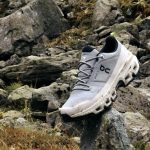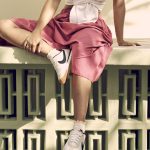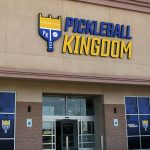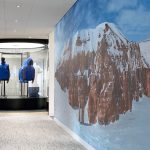The Finish Line expects to see the promotional landscape in the mall continue as they enter the Back-to-School period, but is also looking for some upside with the amount of athletic specialty retail real estate that has been taken out of the market and a shift by the consumer to performance-oriented product. The positives outweighed any potential negative for BTS as FINL reiterated its recent guidance and upped its new store plan to 70 doors this year, a net gain of ten from the most recent plan.
In a conference call with analysts Friday, Finish Line chairman and CEO Alan Cohen attempted to avoid some of the competitive rhetoric that put so much focus on another CEO last month. While he clearly laid the foundation for the issue with analysts, he steered clear of making any direct references to competitors, instead urging the participants to go to the mall and assess the landscape for themselves.
The comments about the competition and the challenges of attempting to anniversary a strong Q2 last year may have diverted attention away from what was another very strong quarter for FINL Excluding costs associated with the attempt at acquiring the Footaction stores, diluted EPS would have risen 60.7% for Q1.
As previously reported in SEW_0423, FINL saw comparable store sales for the first quarter ended May 29 increase 14% on top of a 14% increase reported for the same period last year. Footwear comparable store sales increased 16% and Apparel/Accessories comparable store sales increased 5% for the quarter. The retailer started including Internet sales at the start of the new fiscal year, which added about 1.0% to the comp sales increase. Internet sales were up about 89% for Q1.
Womens and Kids footwear were up double-digits and Mens posted high-single-digit gains, with “strength in basketball and running”. Cross-training and Outdoor “under-performed”. FINL said they also still saw growth in the white classics category, with K-Swiss and Phat Farm called out here. Womens saw “strong gains” in running and athletic casual.
FINL said gross margin improved due to “continuing strong sell-through of higher-priced performance and premium footwear, led by Nike.” Those premium product sales were said to have led to a 5% increase in the average selling price in footwear for Q1.
FINL raised guidance for the first quarter, now estimates EPS in the 41 cents to 43 cents per share range versus previous guidance in the 37 cents to 39 cents range. The increased guidance includes a two to three cent hit due to the unsuccessful bid for the FA stores.
Comps are expected to increase 5% for the second quarter, versus a previous forecast of approximately 3%, and total sales are now seen increasing 14.5% to $310.0 million.
The conservative approach to Q2 may have spooked a few analysts, but FINL sees it as a prudent move due to the big numbers posted last year.
Second quarter last year saw a 15% comp increase in June, followed by a 19% gain in July, and a 29% jump in August. Apparel drove mush of those increases in the year-ago period, but the August period also saw footwear performance excel with a 27% comp sales increase for the month.
Finish Line said the positive Q1 comp sales trends continued into June. Month-to-date comps are currently showing a low-double-digit gain for the month with positives coming from both footwear and apparel. FINL pointed out that apparel appears to be reversing a trend from Q1 that saw apparel comp sales performance move into the negative in May, which was reportedly up against a May last year that had a 50% comp sales gain. Apparel was reportedly up in mid-single-digits for the June MTD period.
Cohen said that Nike will continue to be the “leading performance product driver for the remainder of the fiscal year” and talked of a “shared long-term vision for athletic specialty for each others brands”. He also pointed to exclusive products for summer and fall in the running category from adidas and a cross-training program from Reebok. FINL expects that roughly two-thirds of their product mix will remain to be exclusive styles or colors, which should mitigate some of the promotional pressure in the mall.
Cohen said they are anticipating a “slight decrease” in total Licensed apparel sales for Q2, but expects it to remain “closer to 55%” of total apparel sales. FINL sees Branded moving to 25% of sales and Private Label was the balance. Last year, Licensed was 65% of the business and Branded was 20% of apparel sales.
>>> FINL estimates that there is $400 million in athletic specialty business available after the JFF and FA closures and they want a bigger slice…














